 And now – Fresh from watching VerStappen win the Malaysian Grand Prix F1 one day after his 20th birthday – to complete yesterday’s events with a discussion on the Somerset Rural Life Museum
And now – Fresh from watching VerStappen win the Malaysian Grand Prix F1 one day after his 20th birthday – to complete yesterday’s events with a discussion on the Somerset Rural Life Museum
After the high octane – change four tyres and fill up with gas in 1.9 seconds – a change of pace to a more leisurely look at times of yore.
So why bother with museums at all? Come to that, why bother with history?
* We all, at least the older ones, have the ‘once upon a time….’ imbued into us on our parent’s knee. A story of what happened here 200 years ago can be riveting and stimulating to our imagination. In these green pastures, 3000 men faced each other for the battle of …..
* Our understanding of how things work now can be put into perspective by how things worked 50 years ago. To give a nerdy example, the average cost per Gigabyte of RAM was $6,328 in 1980. In 2000 it was $1,107 and now it is $4.37 Seeing historical ways of producing a car compared with the automated methods now used can bring mixed emotions but seeing the original gives a sense of perspective of how things have changed.
* History can give valuable warnings of things that went wrong and we can look with a certain smugness on those stupid people until a current example shows even more stupidity.
* The examples of the individual overcoming huge challenges can inspire us for example the Romans Conquering Britain (how did they build so many straight roads) or Hannibal crossing the alps, or Scott of the Antarctic. All these are role models that we can store away against the time when a minor problem causes us to be discouraged.
* World history shows there are many different ways of doing things. One of my fascinations is how other races utilised the power of water and its importance as a necessary part of living. We can see which ideas lasted in various forms and which inventions did not.
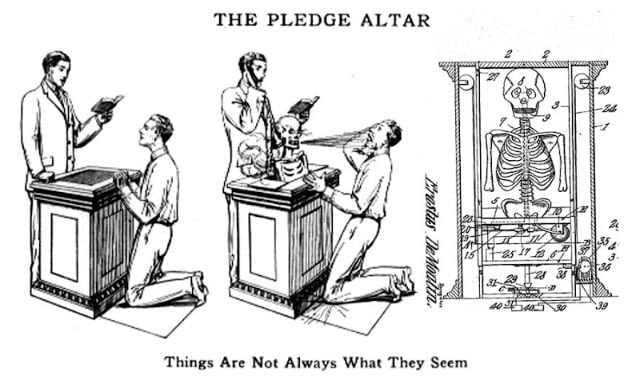
well, that is certainly original
The museum of rural life is just that. It was closed for complete refurbishment about 18 months ago and recently (c. June 2017) opened in a completely refurbished form after a £2.4 million spend.
These are my requirements for a successful experience:
* Make the theme clear and in time sequence is possible
* Do not overcrowd with exhibits no matter how interesting they may be
* LIGHTING is absolutely key. How can you see something when it is half in darkness. I know electricity burns money but please allow enough to pay for such incidentals.
* Descriptors are necessary but don’t overdo or under cook the detail. Three points a work – art or historical – is about right for the attention span of the visitor
* Clear signage. Way Out signs, this way to the cafe etc is not insulting peoples intelligence. Its just than when you are wowed by so much interesting detail you don’t have much time for refocusing the brain to mundane things.
* allow room for the visitor. If it is a popular work then allow more space.
don’t try to be ‘all things to all men’. Less is more. Do you want to give your visitor indigestion?
* volunteer guides are so important as the National Trust will tell you. A welcoming smiling face is a great help if you are visiting on your own
In this case the museum had for the purposes of getting a grant to accommodate itself to the educational needs of groups of school children. There is a lecture hall come class room in a modified structure adjacent to the main building. It is worth a squint through the window.So without further ado here is my picture gallery with comments where necessary. You can also look at the the website for more conventional images.
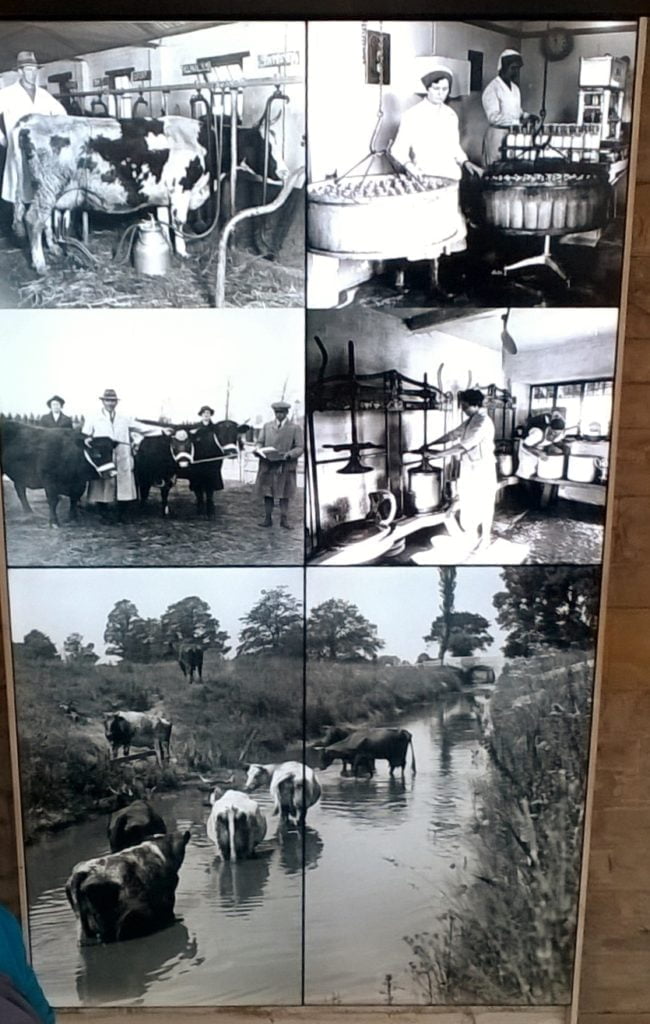
clever presentation see below
Now this is clever. This very large screen is divided up into sections which work independently. One large image can be shown or several sequential images or a number of small ones which refresh at different rates. It’s a very economical way of giving an accurate impression of many themes in a brief period of time.
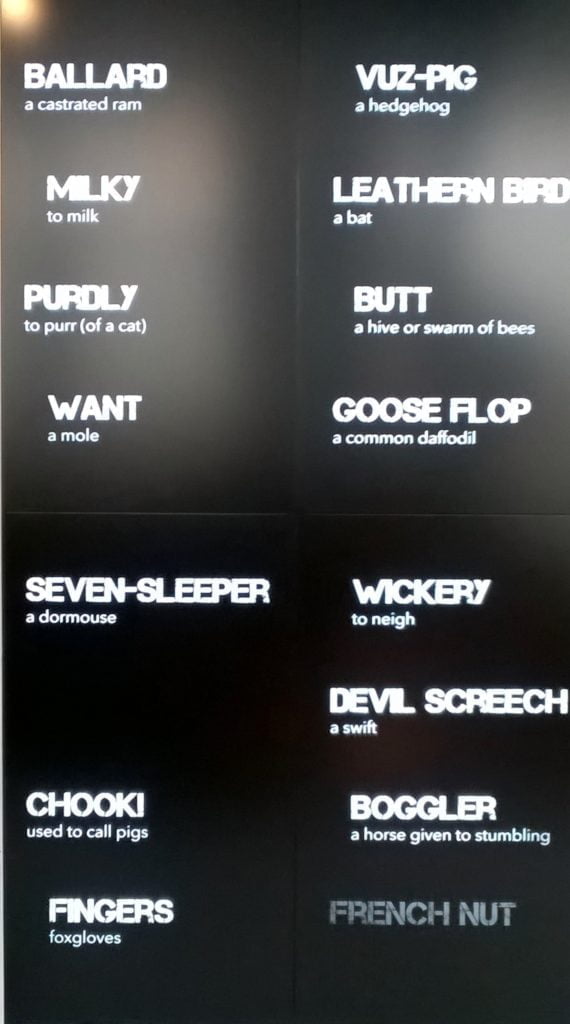
same screen different function
Here we were given local words / slang and their meanings. They came on one at a time so you could follow and be hungry for the next one.
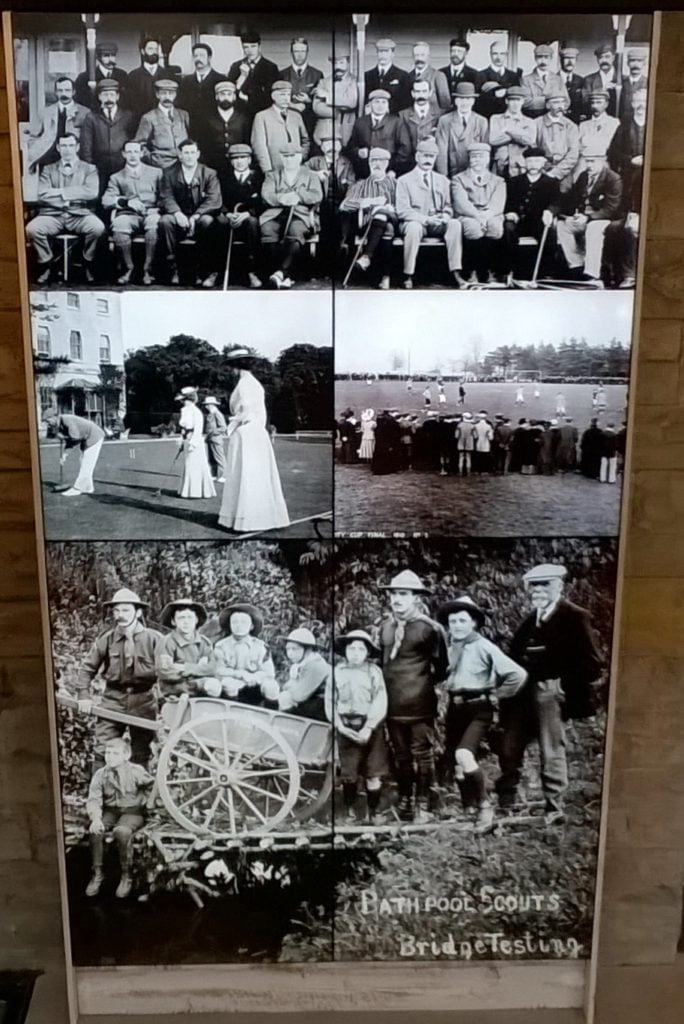
a reminder of the strength of the community
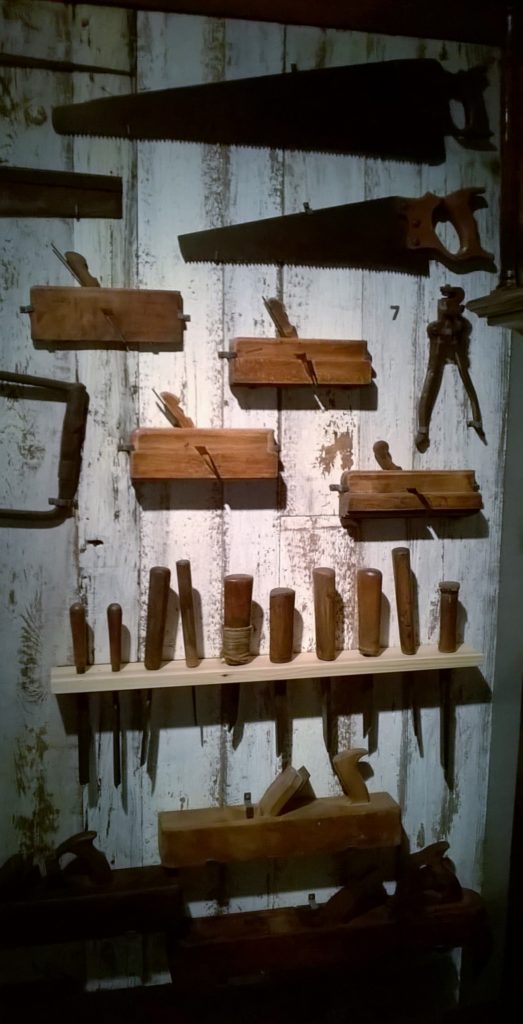
the storing of wood working tools.
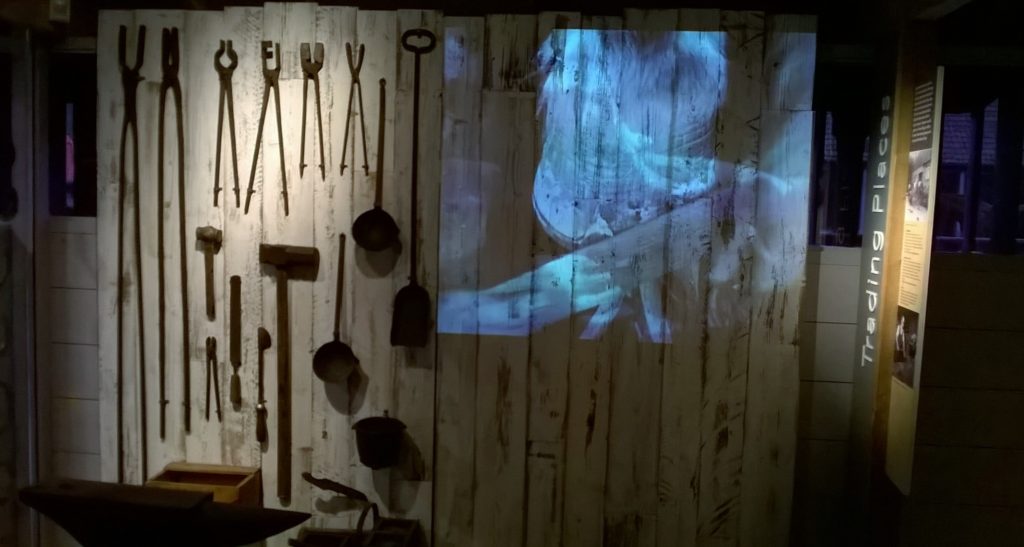
slightly controversial film projection
The idea was to show movies of artisans and craftspeople going about their work but the detail could not be seen with white wooden planks as a background. I liked the symbolic merging of the present with the past. The image was of ‘people working’ and detail was not required.
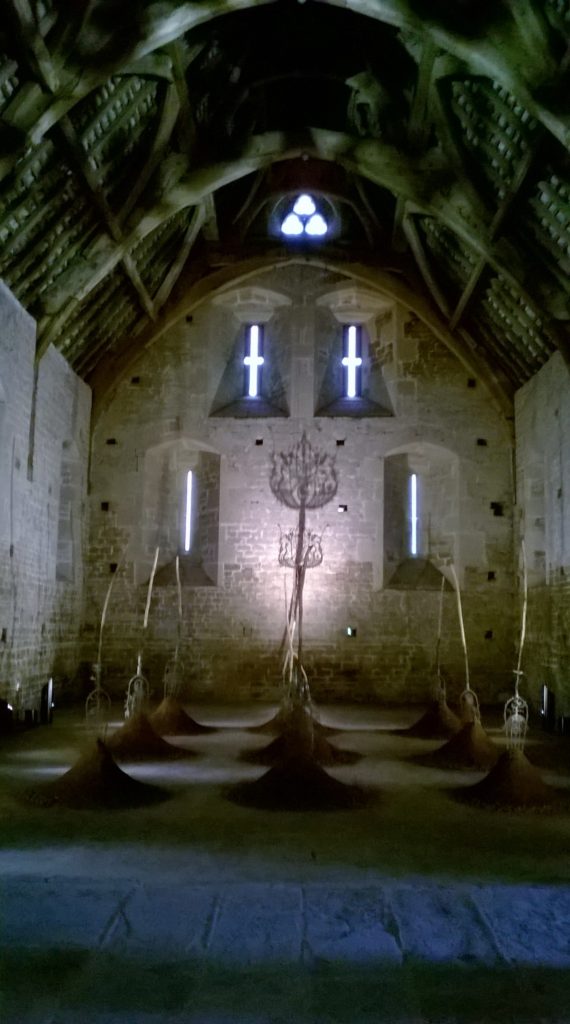
the Tithe barn built 1340 AD
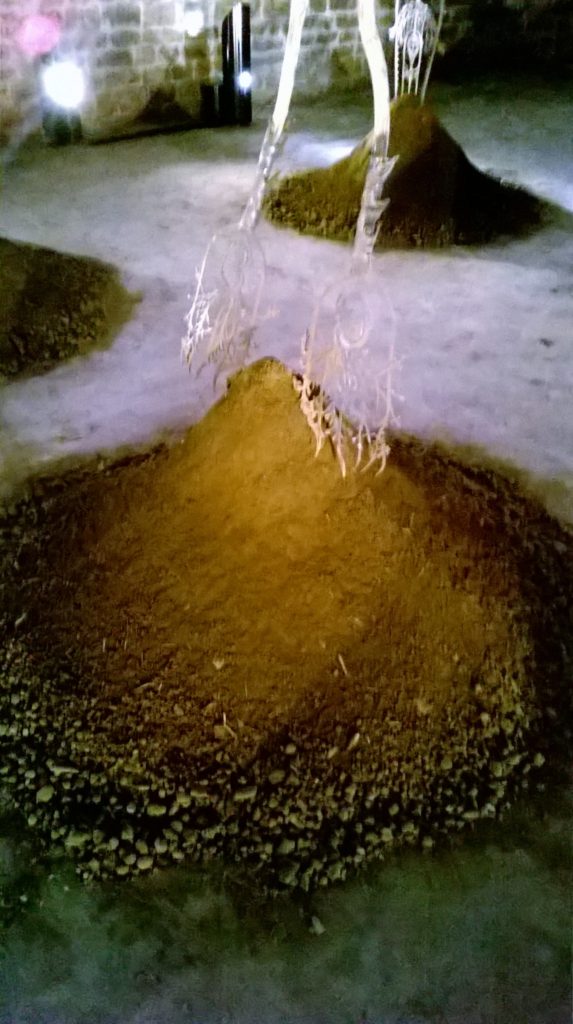
detail
Helen Small, the artist, has called this work ‘Stigmata Forks’. She says ” I wanted to explore the underlying tensions and contradictions betwee
n pagan and Christian rituals surrounding fertility, sex, birth and harvest. The relationships between the ten forks (in the installation) is inspired by notions of social and moral hierarchies, each farm giving a tenth of their produce to the Church in a material and spiritual exchange”
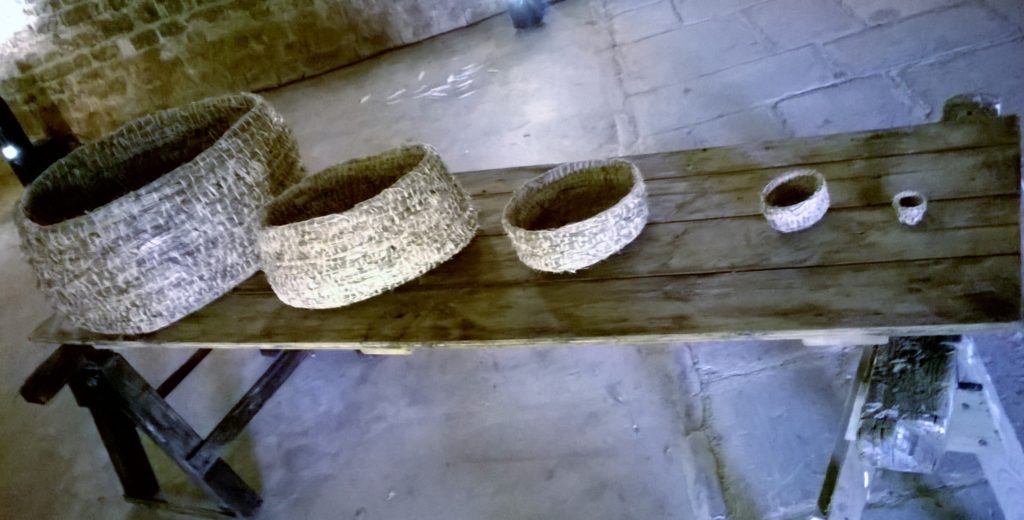
baskets pleasingly arranged
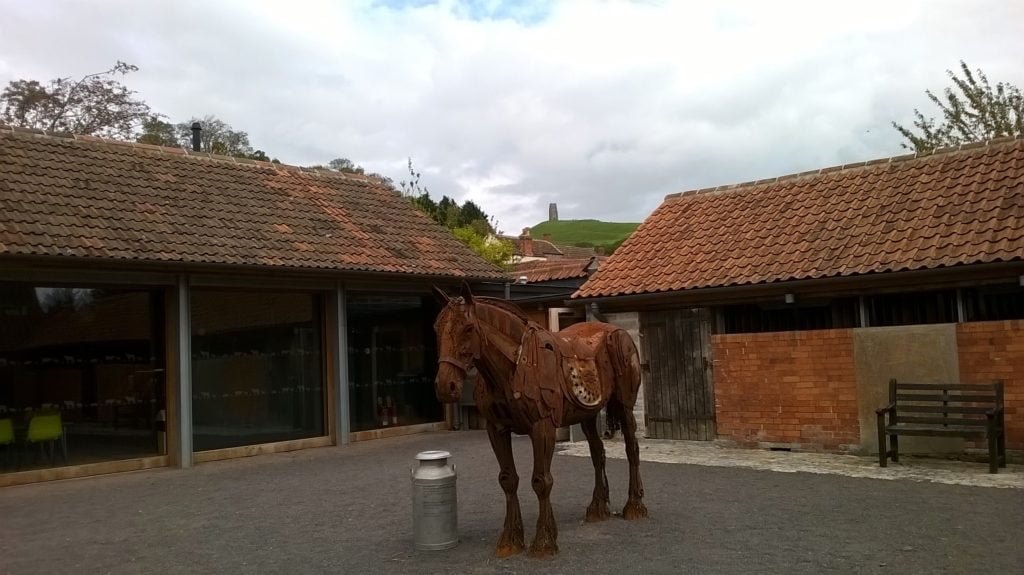
an iron sculpture with Glastonbury Tor in the background
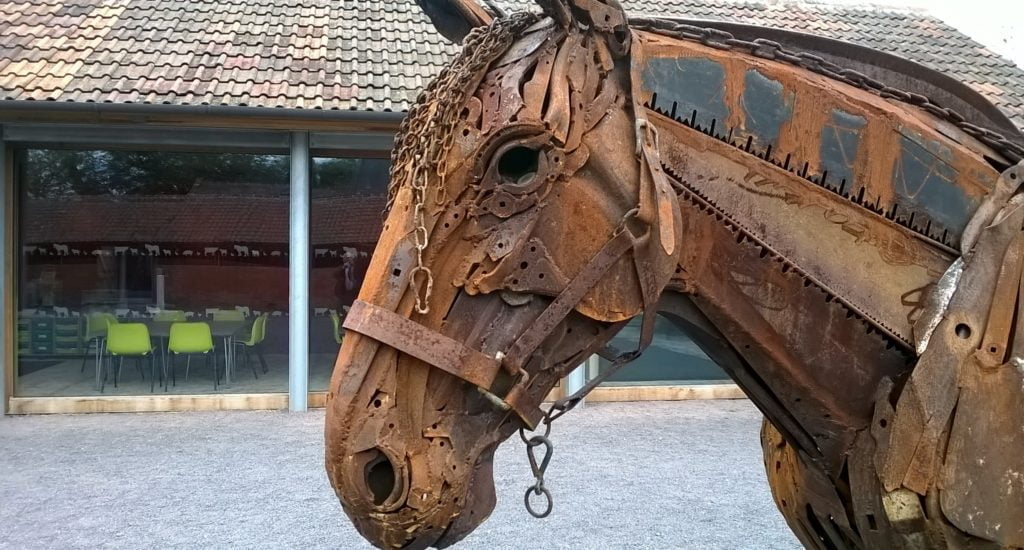
detail
and finally here is my wife milking a cow. Amazingly, when you pull the teats, liquid comes out but alas water not milk. Very good experience for nature-deprived children who think milk comes from Tescos.
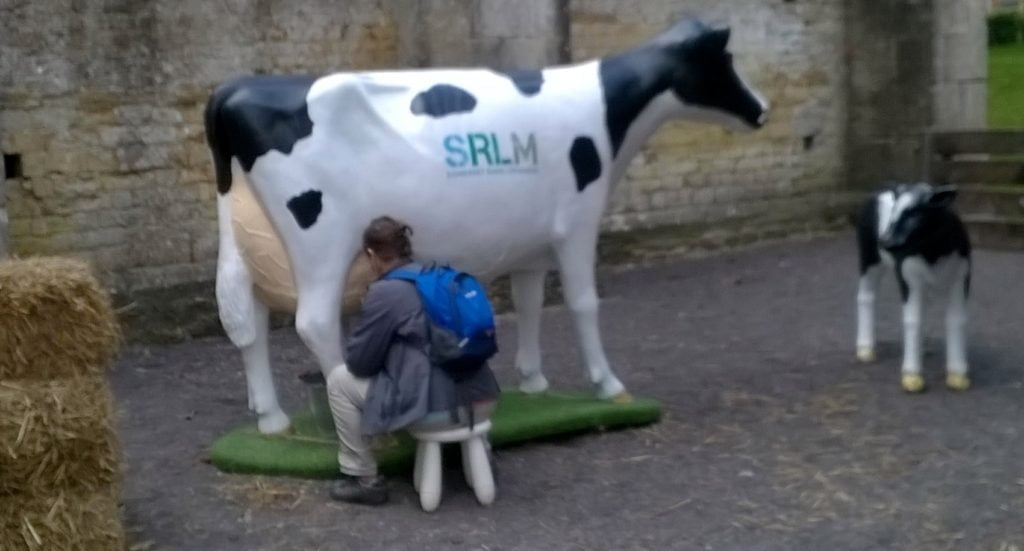
milk maid
We could have gone on to visit other artists but there is only so much you can take so we ended with a visit via the new miniature restaurant and then wended our way. I did have a slight beef. The restaurant owner said that people thought the coffee was a trifle expensive at £2.50 but ‘we do give double shots’. I replied that this was too much for me and gave indigestion. She replied amazingly that she never drank coffee. Well the double shot seemed a good idea at the time but should be revised.
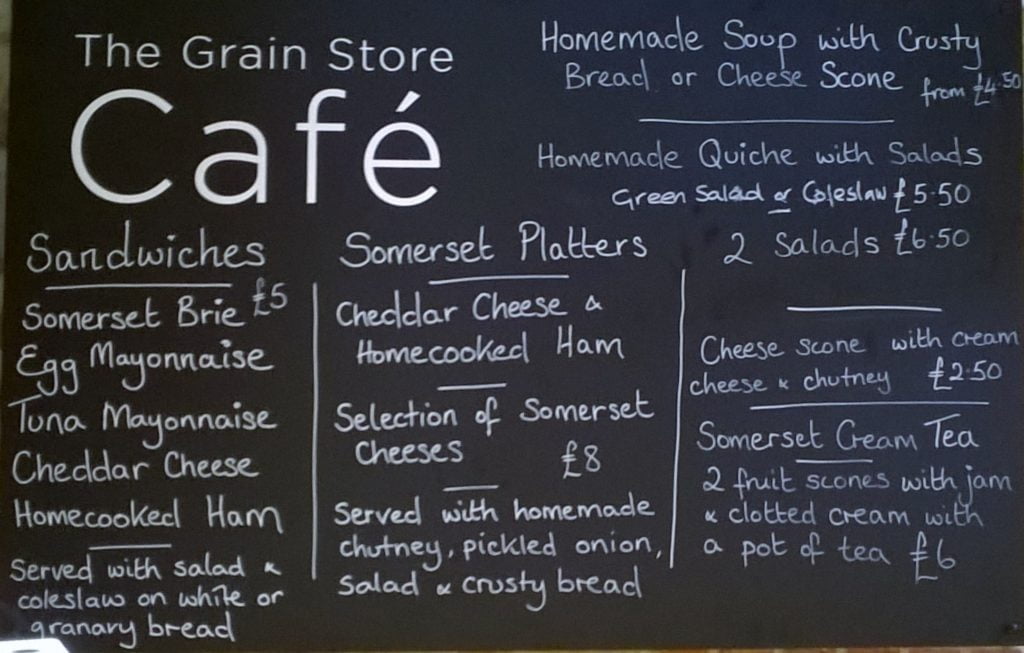
lovely clear menu

0 Comments